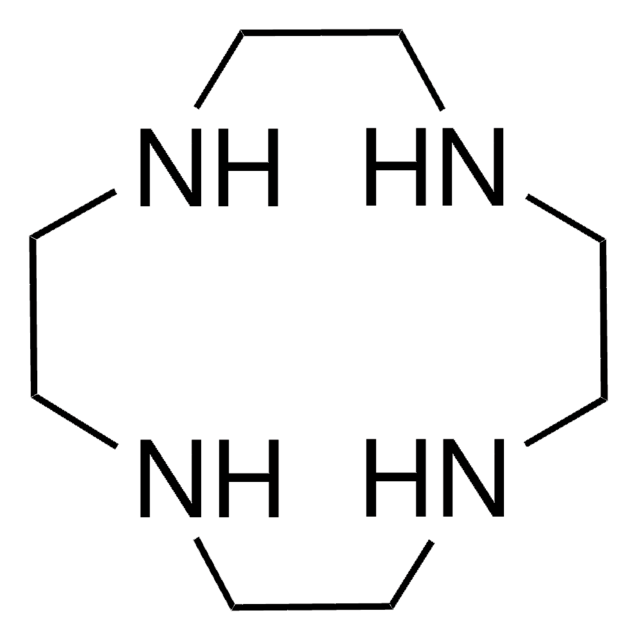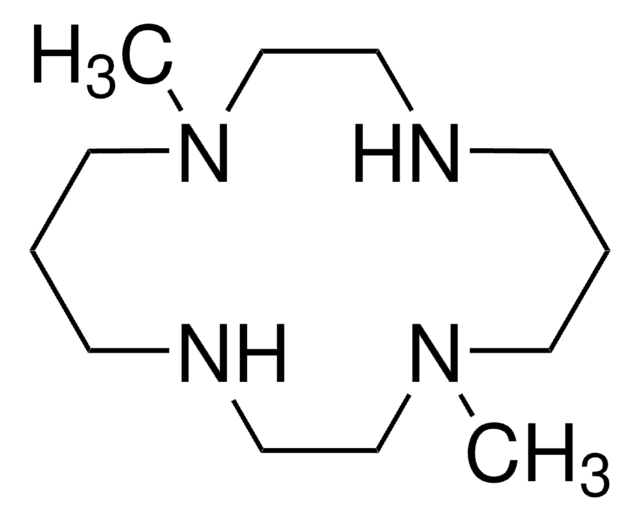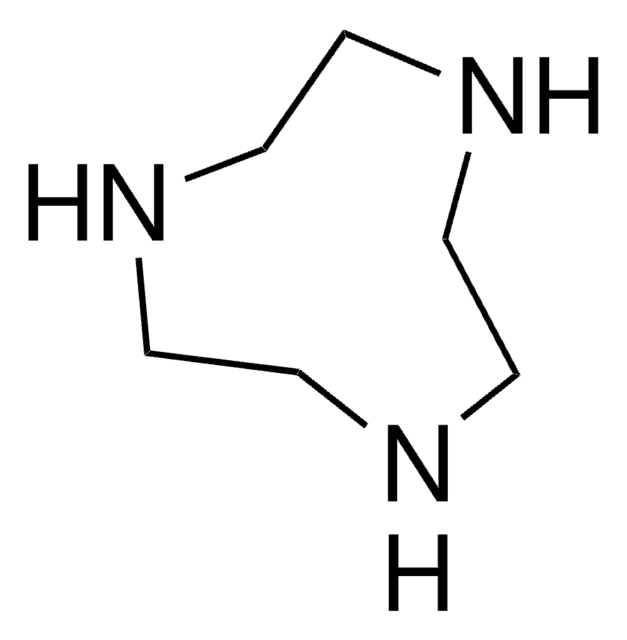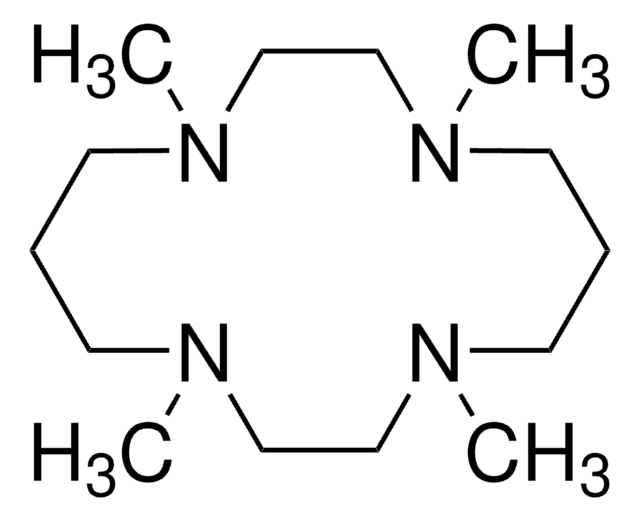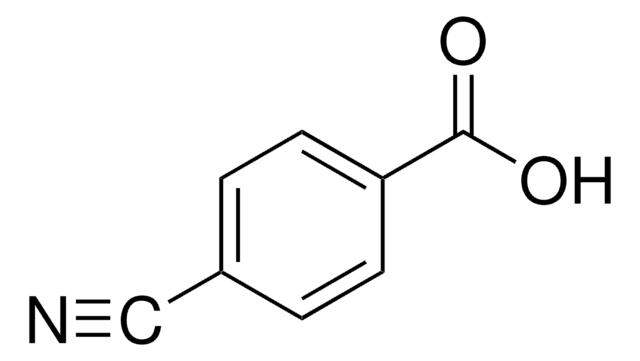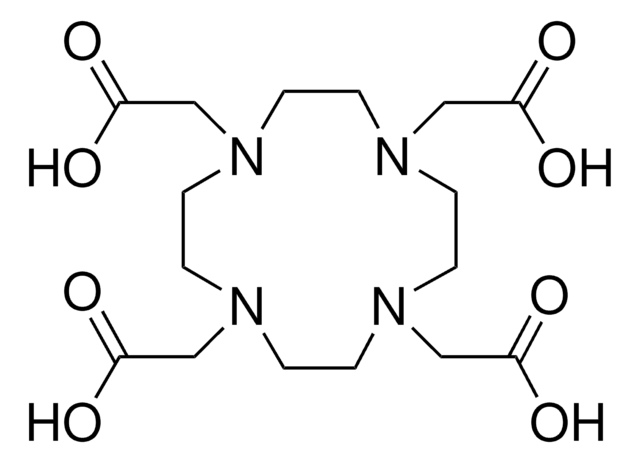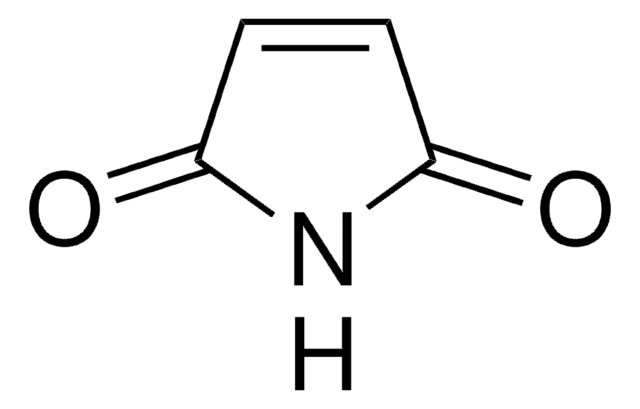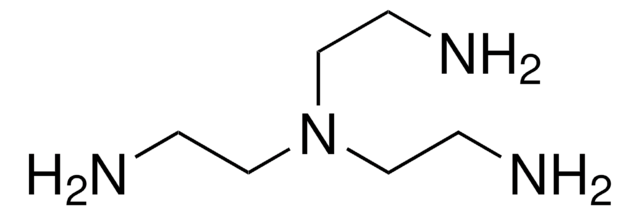259160
1,4,8,11-Tetraazacyclotetradecane
98% (GC)
Synonym(s):
Cyclam
About This Item
Recommended Products
Assay
98% (GC)
mp
184-186 °C (lit.)
SMILES string
C1CNCCNCCCNCCNC1
InChI
1S/C10H24N4/c1-3-11-7-9-13-5-2-6-14-10-8-12-4-1/h11-14H,1-10H2
InChI key
MDAXKAUIABOHTD-UHFFFAOYSA-N
Looking for similar products? Visit Product Comparison Guide
Related Categories
General description
Application
- Cyanide-bridged FeIII-CuII complexes.
- Zinc fenamate complexes [Zn(cyclam)(fen)2] possessing antimicrobial properties, fen = fenamic acid.
- Zn(II) complexes with flufenamic acid (flu), [Zn(cyclam)(flu)2].
- Polyoxometalate-metal organic extended framework, for example [{Cu(cyclam)}3(W7O24)].15.5.H2O.
Signal Word
Warning
Hazard Statements
Precautionary Statements
Hazard Classifications
Eye Irrit. 2 - Skin Irrit. 2
Storage Class Code
11 - Combustible Solids
WGK
WGK 3
Flash Point(F)
Not applicable
Flash Point(C)
Not applicable
Personal Protective Equipment
Choose from one of the most recent versions:
Already Own This Product?
Find documentation for the products that you have recently purchased in the Document Library.
Articles
We presents an article about a micro review of reversible addition/fragmentation chain transfer (RAFT) polymerization. RAFT (Reversible Addition/Fragmentation Chain Transfer) polymerization is a reversible deactivation radical polymerization (RDRP) and one of the more versatile methods for providing living characteristics to radical polymerization.
Tools for Performing ATRP
Applying ARGET ATRP to the Growth of Polymer Brush Thin Films by Surface-initiated Polymerization
We presents an article about Copper(I)-mediated Living Radical Polymerization in the Presence of Pyridylmethanimine Ligands, and the emergence of living radical polymerization mediated by transition metal catalysts in 1995, which was a seminal piece of work in the field of synthetic polymer chemistry.
Protocols
We presents an article featuring procedures that describe polymerization of methyl methacrylate and vinyl acetate homopolymers and a block copolymer as performed by researchers at CSIRO.
We present an article about RAFT, or Reversible Addition/Fragmentation Chain Transfer, which is a form of living radical polymerization.
An article about the typical procedures for polymerizing via ATRP, which demonstrates that in the following two procedures describe two ATRP polymerization reactions as performed by Prof. Dave Hadddleton′s research group at the University of Warwick.
Our team of scientists has experience in all areas of research including Life Science, Material Science, Chemical Synthesis, Chromatography, Analytical and many others.
Contact Technical Service